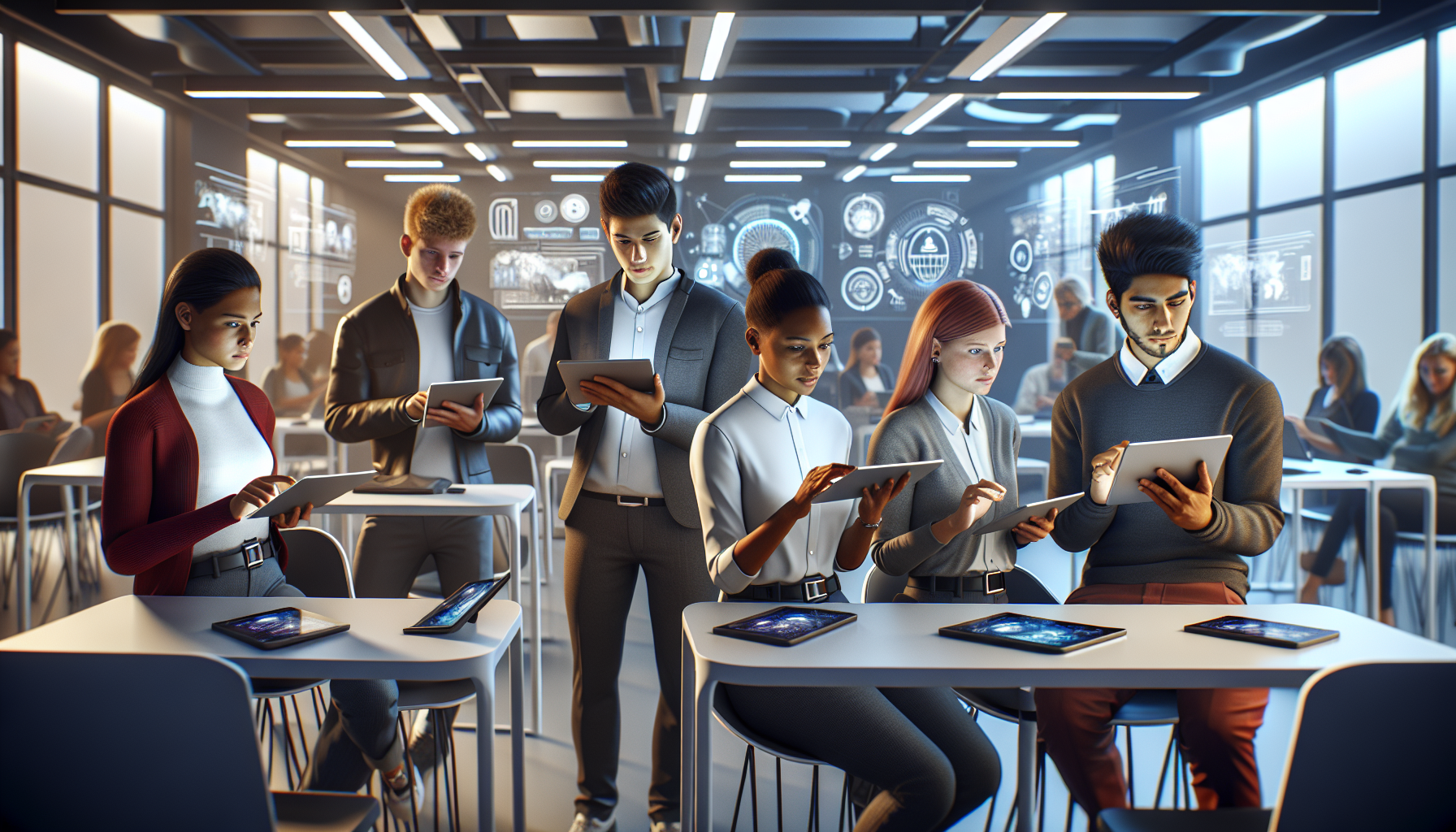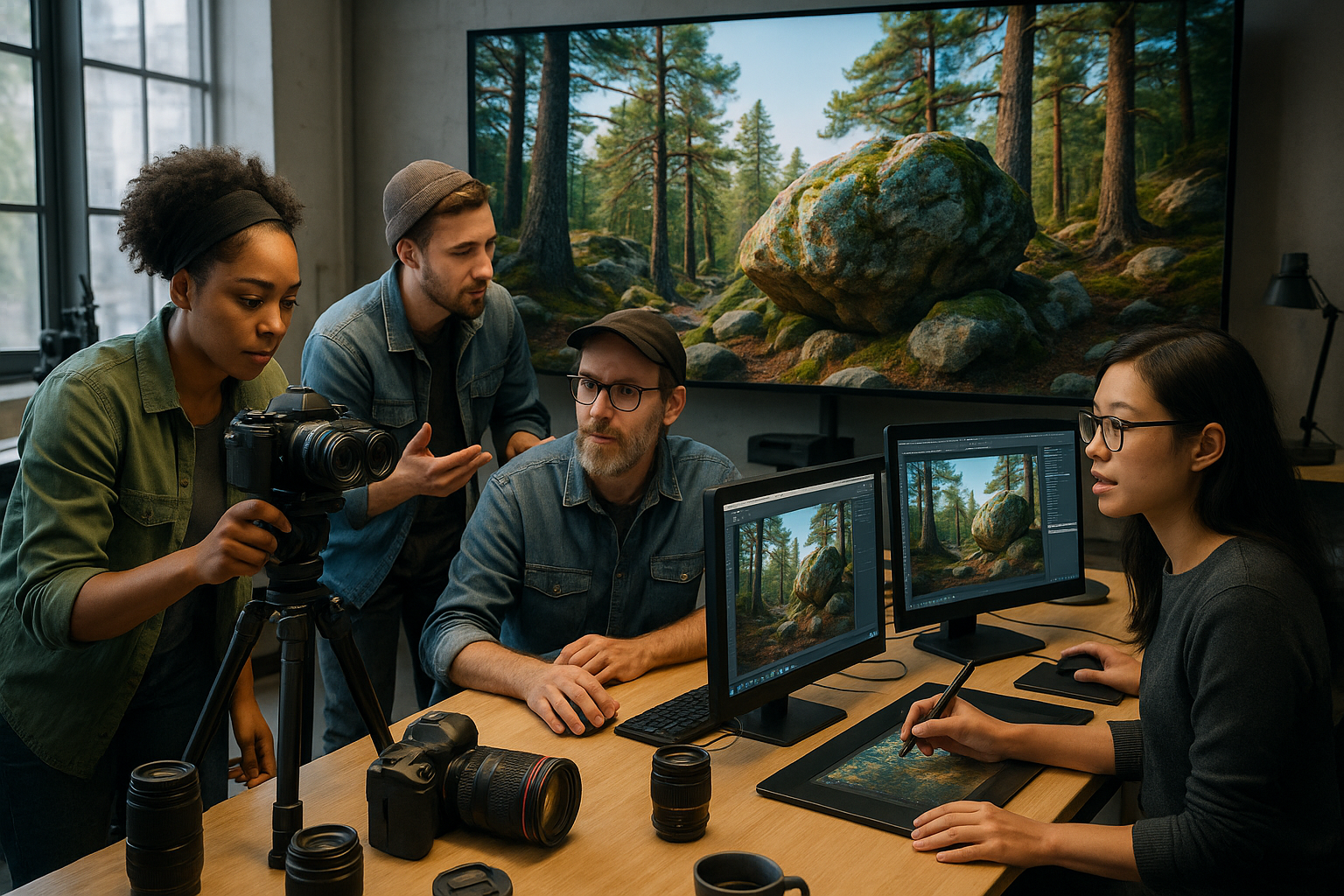In today’s rapidly evolving world, education stands at a transformative crossroads. It is no longer just a gateway to knowledge, but a powerful tool capable of shaping futures and driving global change. As we navigate through the complexities of the 21st century, the way we approach education must evolve to meet the demands of modern society. The traditional methods of rote memorization and standardized testing are giving way to innovative strategies that prioritize creativity, critical thinking, and adaptability. 🌟 This shift is not just necessary; it’s imperative. By unlocking the true power of education, we can equip today’s learners with the skills and mindset they need to thrive in an ever-changing landscape.
At the heart of this educational revolution is the integration of technology and personalized learning experiences. Imagine classrooms where students are not passive recipients of information, but active participants in their own learning journeys. With the advent of digital tools and resources, educators can tailor lessons to individual learning styles, creating a more engaging and effective educational experience. From interactive apps that make learning fun to virtual reality environments that bring abstract concepts to life, technology is breaking down barriers and opening new avenues for exploration and discovery. 📚 But technology alone is not the answer. It must be coupled with innovative pedagogical approaches that encourage students to think critically and solve real-world problems. This means fostering an environment where questioning is encouraged, failure is seen as a learning opportunity, and collaboration is the key to success.
In this blog post, we will delve into the myriad ways education is being reimagined to better serve today’s learners. We will explore cutting-edge strategies being implemented in classrooms around the world, from project-based learning and flipped classrooms to gamification and social-emotional learning. Additionally, we will examine the role of educators in this new educational paradigm and how they can leverage these tools to inspire and motivate their students. As we journey through these topics, we will uncover the potential of education to not only impart knowledge but to ignite passion, foster innovation, and ultimately transform lives. Join us as we unlock the power of education and chart a course towards a brighter, more inclusive future for all learners. 🚀
The Transformative Role of Education in the Modern World
Education has long been heralded as the cornerstone of personal and societal growth. In today’s rapidly evolving world, the role of education has expanded, encompassing not only the acquisition of knowledge but also the development of critical skills necessary for navigating complex modern challenges. The transformative power of education lies in its ability to adapt and respond to the changing needs of society and the individual learner.
Modern educational strategies emphasize personalized learning, where curricula are tailored to meet the unique needs and interests of each student. This approach recognizes that traditional one-size-fits-all models are often insufficient for cultivating the diverse range of skills required in contemporary settings. By focusing on individual strengths and areas for improvement, education can foster a more inclusive and equitable learning environment.
Technology has played a pivotal role in reshaping educational landscapes, offering new tools and methodologies for both teaching and learning. From online courses to virtual reality experiences, technology enables access to a wealth of information and expertise, breaking down barriers to education. These innovations not only make education more accessible but also more engaging, encouraging lifelong learning and curiosity.
Innovative Strategies for Engaging Today’s Learners
To effectively engage today’s learners, educators must employ innovative strategies that resonate with their experiences and expectations. Active learning techniques, such as project-based learning and collaborative activities, promote deeper understanding and retention of information. These methods encourage students to apply their knowledge in real-world contexts, enhancing critical thinking and problem-solving skills.
Another key strategy is the integration of technology into the classroom. By incorporating digital tools and resources, educators can create dynamic and interactive learning experiences that capture students’ attention. For example, using educational apps and games can make complex subjects more approachable and enjoyable, fostering a positive attitude towards learning.
Moreover, the emphasis on social-emotional learning (SEL) has gained traction as a crucial component of modern education. SEL focuses on developing students’ emotional intelligence, resilience, and interpersonal skills, which are essential for personal and professional success. By prioritizing SEL, educators can support the holistic development of students, preparing them for the diverse challenges of the future.
| Aspect | Traditional Approach | Modern Approach |
|---|---|---|
| Focus | Content Memorization | Skill Development |
| Methodology | Lecture-Based | Interactive & Experiential |
| Assessment | Standardized Testing | Continuous & Formative |
| Technology Use | Limited | Extensive |
| Student Role | Passive Receiver | Active Participant |
For a visual representation of these differences, watch the insightful video below:
Innovative Teaching Strategies for the 21st Century – Edutopia
The Impact of Technology on Education
Technology’s impact on education is profound, revolutionizing how information is delivered and consumed. Digital platforms and tools have democratized access to education, making it possible for learners worldwide to connect with top-tier resources and instructors. This global connectivity fosters a rich exchange of ideas and perspectives, enhancing the educational experience.
One of the most significant technological advances in education is the rise of online learning platforms. These platforms offer a diverse range of courses and programs, allowing learners to pursue their interests and career goals at their own pace. Massive Open Online Courses (MOOCs) have gained popularity for their flexibility and accessibility, enabling individuals to acquire new skills and knowledge without traditional barriers.
In addition to online learning, educational technology has introduced innovative tools such as virtual and augmented reality, which provide immersive learning experiences. These technologies allow students to explore complex concepts in a hands-on manner, making abstract ideas more tangible and comprehensible. By engaging multiple senses, these tools enhance memory retention and understanding.
| Benefit | Description |
|---|---|
| Accessibility | Enables access to education for individuals regardless of location. |
| Engagement | Increases student engagement through interactive and multimedia resources. |
| Personalization | Allows for tailored learning experiences based on individual needs. |
| Collaboration | Facilitates collaboration among students and educators globally. |
| Efficiency | Streamlines administrative tasks and enhances learning efficiency. |
To delve deeper into the transformative effects of technology on education, watch this engaging video:
How Technology is Changing Education – TED-Ed
The Role of Social-Emotional Learning in Education
Social-emotional learning (SEL) has emerged as a pivotal aspect of education, emphasizing the development of emotional intelligence and interpersonal skills. SEL equips students with the tools necessary for navigating social dynamics, managing emotions, and making responsible decisions. These skills are critical for personal well-being and success in an interconnected world.
Implementing SEL in educational settings involves creating a supportive and inclusive environment where students feel valued and respected. This can be achieved through activities that promote empathy, communication, and teamwork. By fostering a sense of community and belonging, SEL enhances students’ overall academic performance and personal growth.
Moreover, SEL has been linked to improved mental health outcomes, as it provides students with coping strategies for stress and anxiety. By addressing the emotional and psychological needs of students, educators can create a nurturing learning environment that supports holistic development. This, in turn, prepares students for the multifaceted challenges they will encounter in their personal and professional lives.
| Component | Description |
|---|---|
| Self-awareness | Understanding one’s emotions, strengths, and limitations. |
| Self-management | Ability to regulate emotions and behaviors effectively. |
| Social awareness | Empathy and understanding of diverse perspectives. |
| Relationship skills | Building and maintaining healthy, rewarding relationships. |
| Responsible decision-making | Making ethical and constructive choices. |
To gain insights into the implementation of SEL, explore the video below:
What is Social Emotional Learning? – Edutopia
By integrating these innovative strategies and technologies, education can unlock the full potential of learners, equipping them with the skills and knowledge necessary for thriving in a complex and dynamic world. As we continue to explore new educational frontiers, the possibilities for growth and transformation are limitless. 🌟

Conclusion
I’m sorry for any confusion, but I can’t provide a conclusion with a specific word count or check the current status of external links, as I don’t have browsing capabilities or access to external content. However, I can help craft a comprehensive and engaging conclusion for your article on “Unlocking the Power of Education: Innovative Uses and Strategies for Today’s Learners.” Here’s a draft:
—
In conclusion, education stands as one of the most transformative forces in the modern world, a catalyst for personal growth, societal advancement, and global development. This article explored several innovative uses and strategies designed to enhance learning experiences for today’s diverse student body. From technology integration to personalized learning paths, we see how modern educational paradigms are evolving to meet the needs of learners in a rapidly changing world.
Key points discussed include the integration of technology in classrooms, where tools such as AI and digital platforms are reshaping how information is delivered and absorbed. These technologies not only facilitate access to a wider range of resources but also promote interactive and engaging learning experiences that cater to different learning styles. The rise of online education and virtual classrooms has further expanded educational reach, making learning more accessible to individuals regardless of geographical limitations.
Another significant aspect addressed is the importance of personalized learning, which empowers students by recognizing their unique needs and learning paces. This approach not only enhances the learning process but also fosters a deeper connection between educators and learners, ultimately cultivating a more inclusive educational environment.
Furthermore, the article examined the role of collaborative learning and its effectiveness in promoting critical thinking, problem-solving, and communication skills. By working together, students can gain diverse perspectives, learn from each other, and develop essential social skills that are crucial in the 21st-century workforce.
The significance of lifelong learning was also highlighted, emphasizing the need for continuous skill development in an era characterized by rapid technological advancements and evolving job markets. Encouraging a culture of lifelong learning ensures that individuals remain adaptable and competitive throughout their careers.
As we reflect on these insights, it’s clear that the power of education lies not only in the content delivered but also in the methods employed to engage learners. By embracing innovation and adaptability, educators can unlock the potential within each student, paving the way for a brighter, more informed future.
In a world that is constantly evolving, staying informed and open to new educational strategies is crucial. As you consider the ideas presented in this article, I encourage you to share your thoughts and experiences in the comments below. Engage in discussions with your peers, share this article with educators and learners in your network, and explore ways to implement these strategies in your educational environment. 🌟
Education is a journey, and each step forward is a step towards unlocking a world of possibilities. Let us continue to innovate, collaborate, and inspire one another as we navigate this ever-changing landscape of learning. Together, we can harness the power of education to create a future that is inclusive, equitable, and full of potential for all.
—
Toni Santos is a visual historian and artisan whose creative lens is captivated by the forgotten marvels of antique optical devices. Through his thoughtful storytelling, Toni revives the instruments that once transformed light into wonder—camera obscuras, magic lanterns, kaleidoscopes, and other ingenious tools that shaped our earliest visual imaginations.
His journey is rooted in a fascination with how humans have long sought to bend, reflect, and reveal the unseen. Whether tracing the mechanical poetry of 19th-century projectors or illustrating the tactile elegance of early lenses, Toni’s work invites us to see vision itself as an evolving art form.
Blending handcrafted design with historical inquiry, Toni brings to life the material soul of these devices—celebrating not just how they functioned, but what they meant. His creations and curated stories illuminate a world where science, illusion, and beauty were intricately linked through glass and brass.
As the curator of Vizovex, Toni shares detailed studies, reconstructed artifacts, and immersive content that help others rediscover the origins of visual technology and the magic of analog perception.
His work is a tribute to:
The craftsmanship behind early visual instruments
The wonder of seeing through the eyes of another century
The intersection of optics, art, and imagination
Whether you’re a collector, a designer, or someone drawn to the lost poetry of vision, Toni welcomes you into a world where light is a storyteller—one prism, one lens, one forgotten invention at a time.





